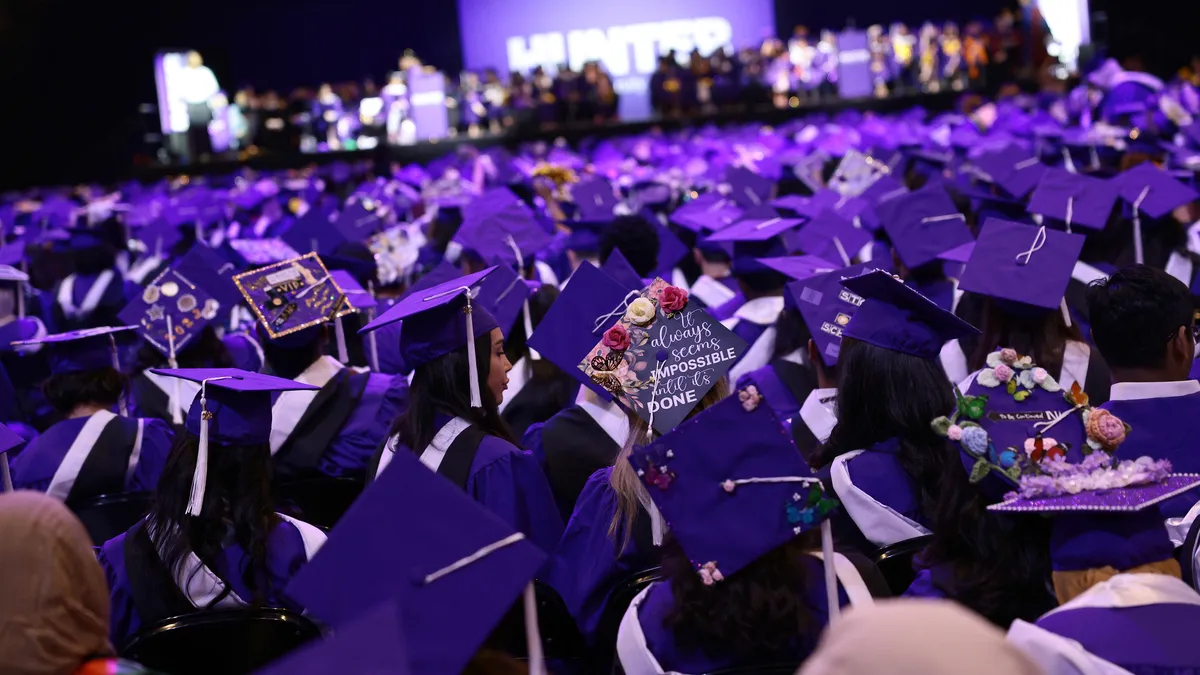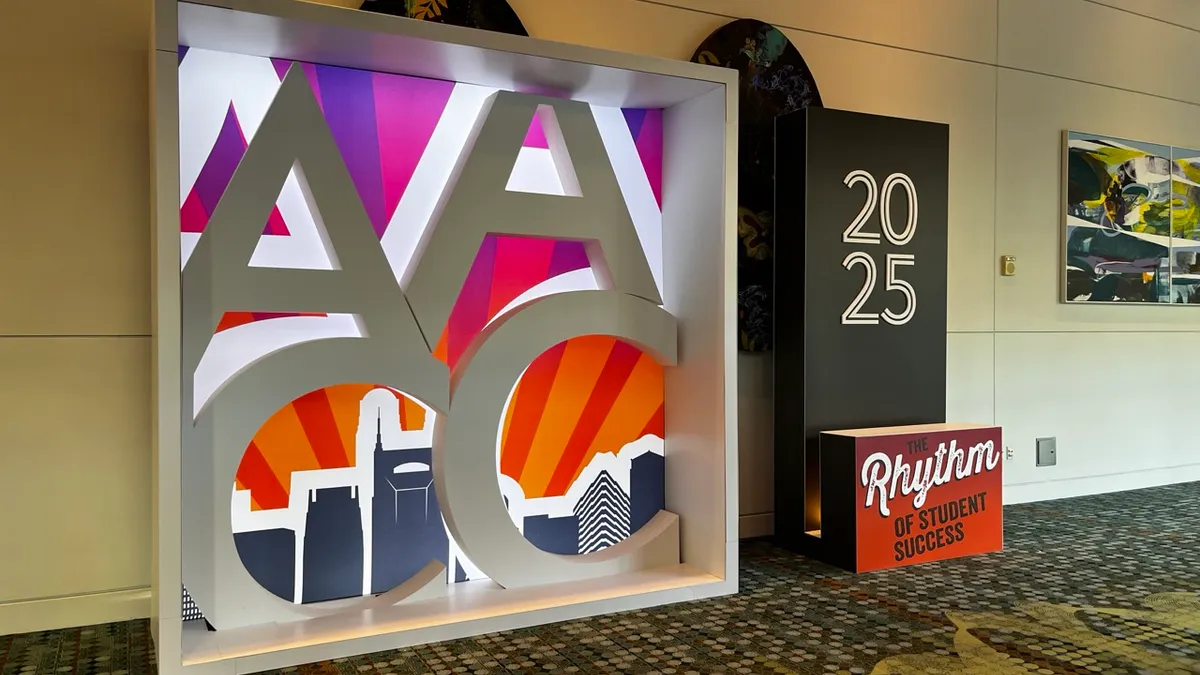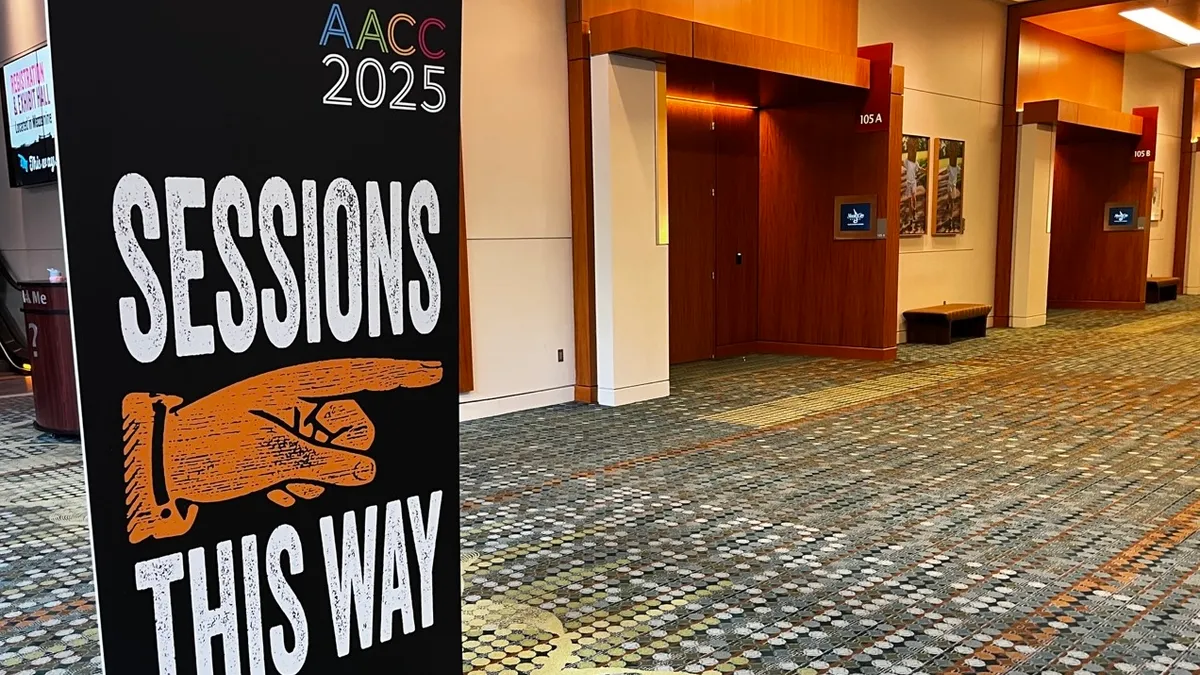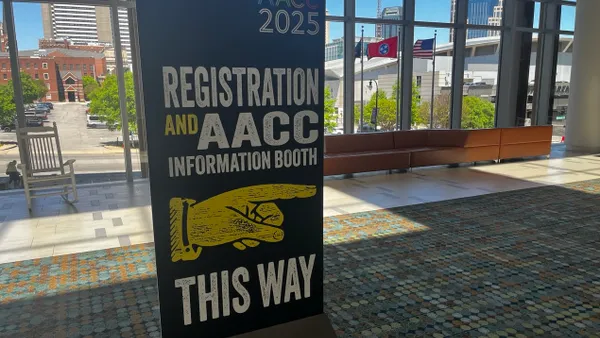Attending public colleges was largely more affordable during the 2021-22 academic year than it was two years prior, though many institutions remained out of reach, a recent report from the National College Attainment Network found.
During the 2021-22 academic year, 49% of community colleges and 33% of four-year public institutions were affordable, according to NCAN’s analysis. That’s compared with just 40% of community colleges and 24% of bachelor’s-granting institutions in 2019-20.
NCAN researchers looked at the sticker price, grant and loan data of 1,216 institutions. They based a college’s affordability on whether the average in-state students’ federal financial aid awards, family contributions and 12 weeks of full-time minimum wage work could cover the institution’s total price, plus $300 in emergency expenses.
When college expenses exceed the sum of aid and other contributions, NCAN researchers call the remaining costs the “affordability gap.” They found the average affordability gap at four-year public colleges declined from $2,627 in 2019-20 to $1,690 in 2021-22. The gap for community colleges also fell over that period, from $907 to $287.
However, it’s unclear whether the affordability gap will continue to shrink. Researchers largely attribute the improvement to the influx of emergency grants for students via federal coronavirus relief, said Louisa Woodhouse, a senior policy associate at NCAN and the report’s lead author.
That money has since dried up, she added.
“So much of what we saw this year I think was impacted by the higher ed emergency relief funding, which really did help to make college — specifically, public universities — more affordable for students in 2022 and 2021 to some extent,” Woodhouse said. “Because that has since run out, I don’t feel confident that we’re going to see that trend increase.”
Federal lawmakers passed three pandemic relief bills providing roughly $76 billion in student aid and operational support for colleges. Through those funds, Pell Grant recipients received an average of $1,380 in emergency grants in 2022, according to a report from the U.S. Department of Education. Students ineligible for Pell Grants received $890 on average.
The report cited several other factors that contributed to increasing affordability, including decreases in tuition and fees and small increases to the maximum Pell Grant, which rose from $6,195 in 2019-20 to $6,495 in 2021-22. Future growth in some aid sources, including Pell Grants, could determine whether the affordability gap continues to close, Woodhouse said.
Cost remains a barrier
Increased college affordability is notable — even if the trend is fleeting — considering cost is still the largest barrier to higher education, the NCAN report said.
Last year, a poll from Gallup and the Walton Family Foundation found that 85% of Gen Z students in K-12 schools viewed college as important, but only 62% planned to pursue higher education after they graduated. Just over half, 53%, believed they could afford it.
Woodhouse specified that students from families with low incomes, first-generation students and those who are Pell-eligible typically get hit hardest by the affordability gap.
“We know that the price tag of college can really play a massive role in locking students out. Sometimes even before they apply it can be a deterrent,” Woodhouse said.
The report’s findings make a “pretty strong argument for continued investment in federal funding and aid sources,” Woodhouse said. “Federal funding works to make college more affordable.”
Colleges can help address affordability by freezing tuition rates like Purdue University, said Kathryn Randolph, a content writer and editor at Finaid, a website that provides financial aid information, advice and tools to students.
High schools and colleges also should educate students about the various ways to pay for college so they don’t believe that taking out student loans is their only option available, Randolph said. That includes instruction on the Free Application for Federal Student Aid so they can receive Pell Grants.
State governments can help by requiring high school seniors to complete the FAFSA to graduate, Randolph said. Roughly a dozen — including Illinois, Texas, California and Indiana — have taken that approach.
“How is a student supposed to qualify for the Pell Grant if they do not or cannot complete a FAFSA?” Randolph said. “We need to invest more in educating students about their options for college affordability and accessibility.”





















